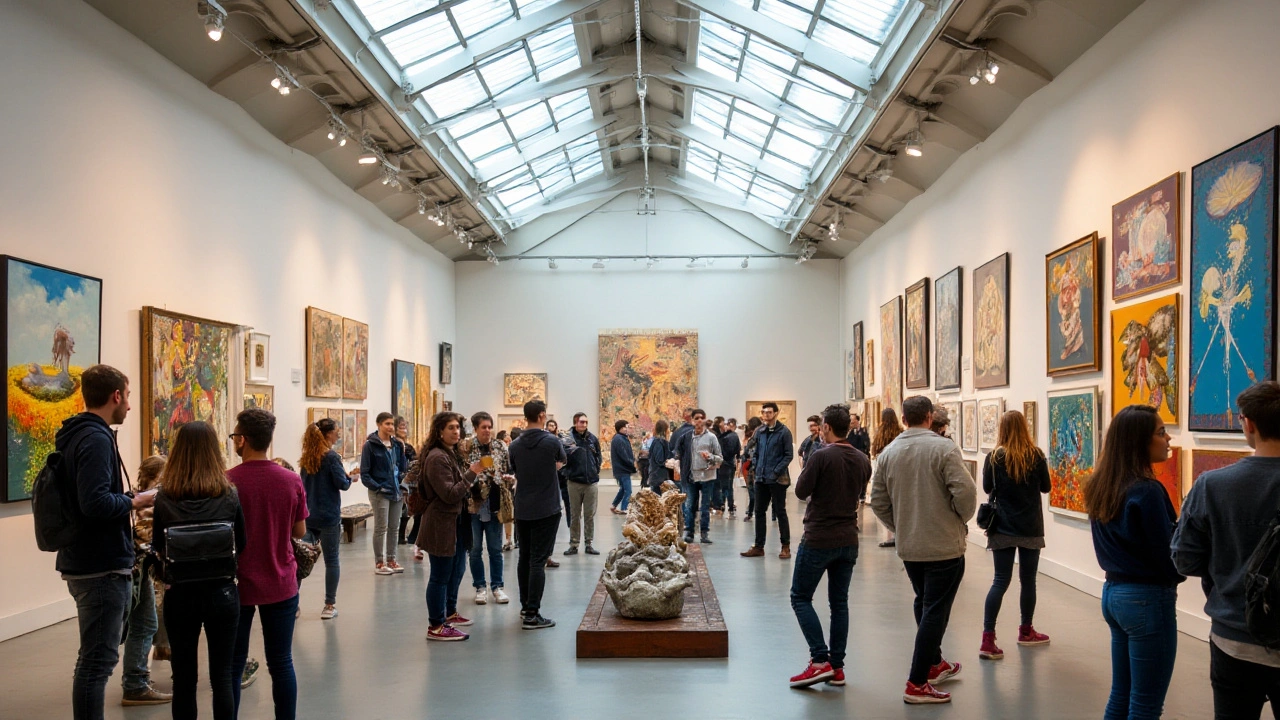Modern Art Scene: A Practical Guide to Today's Movements
Think modern art is a single style? Think again. The modern art scene is a mix of movements that still shape what we see in galleries, streets, interiors, and screens. From Abstract Expressionism’s raw energy to Bauhaus’s clean lines, each movement gives you a different way to read a piece — and a different way to feel it.
Want a quick map? Abstract Expressionism pushed emotion and gesture onto big canvases. Cubism hacked objects into shapes and changed how artists think about perspective. Bauhaus tied art to everyday life, so design and function became one. Fluxus and Installation Art broke the frame entirely, turning performances and spaces into the work. Photorealism makes painting look like a photograph, while Land Art pulls nature into the art conversation. Movements like Constructivism and Futurism mixed politics, tech, and design, and the Harlem Renaissance reshaped culture and identity through art and music.
Where to see the modern art scene now
Start local: small galleries often show experimental work before big museums do. Check public art in parks and plazas — land art and large installations show up in city renewals. Museums are obvious stops for historical threads like Bauhaus and Abstract Expressionism. For contemporary shifts, follow online platforms, artist collectives, and Instagram feeds dedicated to installation and street art. If you want hands-on, look for open studios or artist talks; those let you ask questions and see process, not just finished pieces.
How to read and enjoy modern work
Don’t worry about “getting it.” Ask simple questions: What did the artist use? How does the work make my body or thoughts respond? For installations, notice how space, light, and sound change the experience. For design-influenced pieces, like Bauhaus-inspired furniture or De Stijl graphics, look at balance, grid, and color. If a piece is photorealistic, pay attention to technique: edges, texture, and light. For public art, think about context — why is that piece placed there, and who was it made for?
Use the modern art scene in your life. Try avant-garde decorating with one bold piece, or bring a small print from an emerging photorealist into your living room. When visiting shows, read a short label, then step back and trust your reaction. If a movement or artist hooks you, read one focused article or watch a short talk — not a whole textbook. That keeps learning fast and practical.
If you want to explore further, look up articles on movements like Bauhaus, Abstract Expressionism, Fluxus, Photorealism, and Installation Art. Each offers clear examples and quick tips for spotting what matters. The modern art scene is active and messy in the best way — it rewards curiosity, not perfect understanding.

